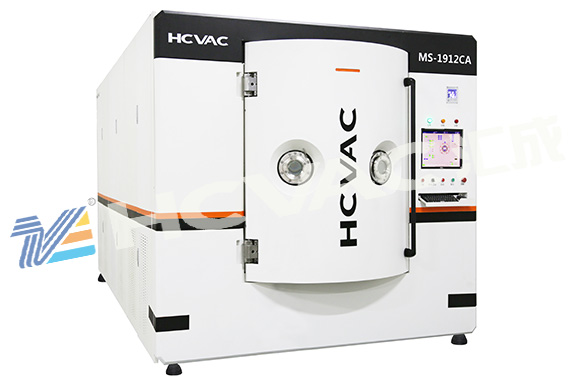In order to improve the film adhesion, bonding force, film structure, etc. of the workpiece, many
pvd coating machines are equipped with ion sources during the coating process.
Although there are many types of ion sources, the purpose is nothing more than online cleaning, improving the energy distribution of the plated surface and modulating the energy of the reactive gas. The ion source can greatly improve the bonding strength between the membrane and the substrate, and at the same time, the hardness, wear and corrosion resistance of the membrane itself will also be improved. If the wear-resistant layer of plating tools is generally thicker and does not require high film thickness uniformity, an ion source with a larger ion current and higher energy level can be used, such as a Hall ion source or an anode layer ion source.

The anode layer ion source is similar to the principle of Hall ion source. A strong magnetic field is applied in an annular (rectangular or circular) narrow slit, and the working gas is ionized under the action of the anode and ejected towards the workpiece. The anode layer ion source can be made very large and long, which is especially suitable for plating large workpieces, such as architectural glass. The ion current of the anode layer ion source is also larger. However, its ion flow is relatively divergent and its energy level distribution is too wide. Generally suitable for large workpieces, glass, wear, and decorative workpieces. But there are not many applications for advanced optical coatings.
Although there are many types of ion sources, the purpose is nothing more than online cleaning, improving the energy distribution of the plated surface and modulating the energy of the reactive gas. The ion source can greatly improve the bonding strength between the membrane and the substrate, and at the same time, the hardness, wear and corrosion resistance of the membrane itself will also be improved. If the wear-resistant layer of plating tools is generally thicker and does not require high film thickness uniformity, an ion source with a larger ion current and higher energy level can be used, such as a Hall ion source or an anode layer ion source.
The anode layer ion source is similar to the principle of Hall ion source. A strong magnetic field is applied in an annular (rectangular or circular) narrow slit, and the working gas is ionized under the action of the anode and ejected towards the workpiece. The anode layer ion source can be made very large and long, which is especially suitable for plating large workpieces, such as architectural glass. The ion current of the anode layer ion source is also larger. However, its ion flow is relatively divergent and its energy level distribution is too wide. Generally suitable for large workpieces, glass, wear, and decorative workpieces. But there are not many applications for advanced optical coatings.
The Hall ion source equipped with the
pvd coating machine is an anode that ionizes the process gas under the cooperation of a strong axial magnetic field. This strong imbalance in the axial magnetic field separates the gas ions and forms an ion beam. Because the axial magnetic field is too strong, the Hall ion source ion beam needs supplementary electrons to neutralize the ion flow. A common neutralizing source is a tungsten wire (cathode).



